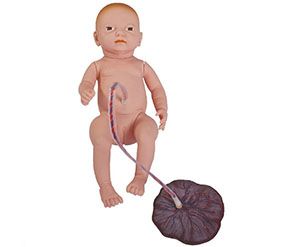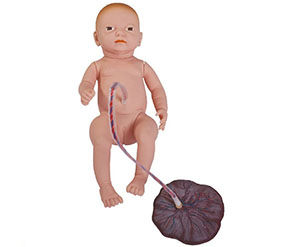ADA MED SUPPLY LIMITED
Phone:+86 19937901373
Tel:+86-0379-65160607
Email:adaanatomy@adaanatomy.com


Neonatal umbilical cord nursing is an important nursing step after the birth of every newborn, which is directly related to the health and safety of newborns. Accurate umbilical cord care skills are critical for healthcare professionals, as any negligence can lead to infection, bleeding or other complications. As a training tool in medical education, neonatal umbilical cord nursing model can help medical staff to improve the accuracy of operation, reduce the occurrence of errors, and improve the quality of care.

Neonatal umbilical cord Care Model
Clinical significance
The umbilical cord care model simulates the real environment of neonatal umbilical cord care and provides a risk-free practice platform. By simulating the umbilical cord cutting, disinfecting, wrapping and other care processes, medical staff can repeat the procedure in a simulated environment, ensuring that they can accurately master the skills of each step. For example, umbilical cord care needs to correctly judge the timing of umbilical cord shedding, master the skills of umbilical cord disinfection, and reasonably bandage the umbilical cord, the accuracy of these operations is crucial to the health of newborns.
The umbilical cord care model is especially important for novice healthcare professionals. Caregivers who are not experienced enough may feel nervous when faced with real cases, and simulation training can help them build confidence. In the absence of risk, medical staff can practice on the model to familiarize themselves with the procedure and improve their ability to cope in the actual clinic.
In addition, the accuracy of umbilical cord care is directly related to the prevention of neonatal infections and diseases. Infection of umbilical cord stump is a common complication, and proper care can greatly reduce the incidence of infection. Through precise nursing techniques, medical staff can not only improve operational efficiency, but also effectively reduce the potential risk of infection during nursing
Data support
Research data in recent years have also shown that health care workers trained using the umbilical cord care model have significantly improved their nursing skills. A study of neonatal care training found that caregivers trained on the umbilical cord care model improved their accuracy by about 40 percent. In addition, another study showed that caregivers who underwent simulation training had a 25 percent reduction in errors during actual operations. These data fully show that the umbilical cord nursing model can help the medical staff to better grasp the nursing skills and improve the precision of operation.
In addition, the training model can reduce the anxiety of novice caregivers in the practice. Many novice caregivers may be nervous because of inexperience when facing a real newborn, and through model training, they can practice repeatedly and gradually accumulate experience, thereby improving their confidence and operational fluency.
Summary
The neonatal umbilical cord care model provides a safe and controllable learning platform for healthcare professionals to help them accurately master nursing skills. These models not only improve the skill level of caregivers, but also improve the safety and effectiveness of neonatal care by reducing operational errors. With the continuous progress of medical technology, the use of umbilical cord care model will become more popular, and it is expected to play a greater role in neonatal care in the future, further improving the quality of neonatal health care.